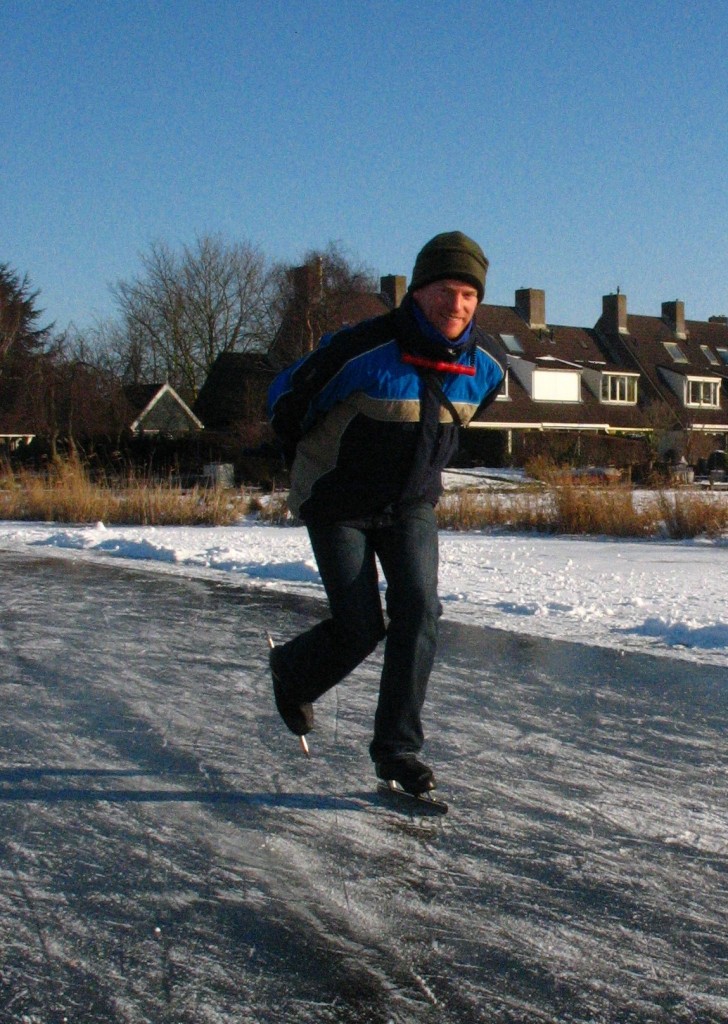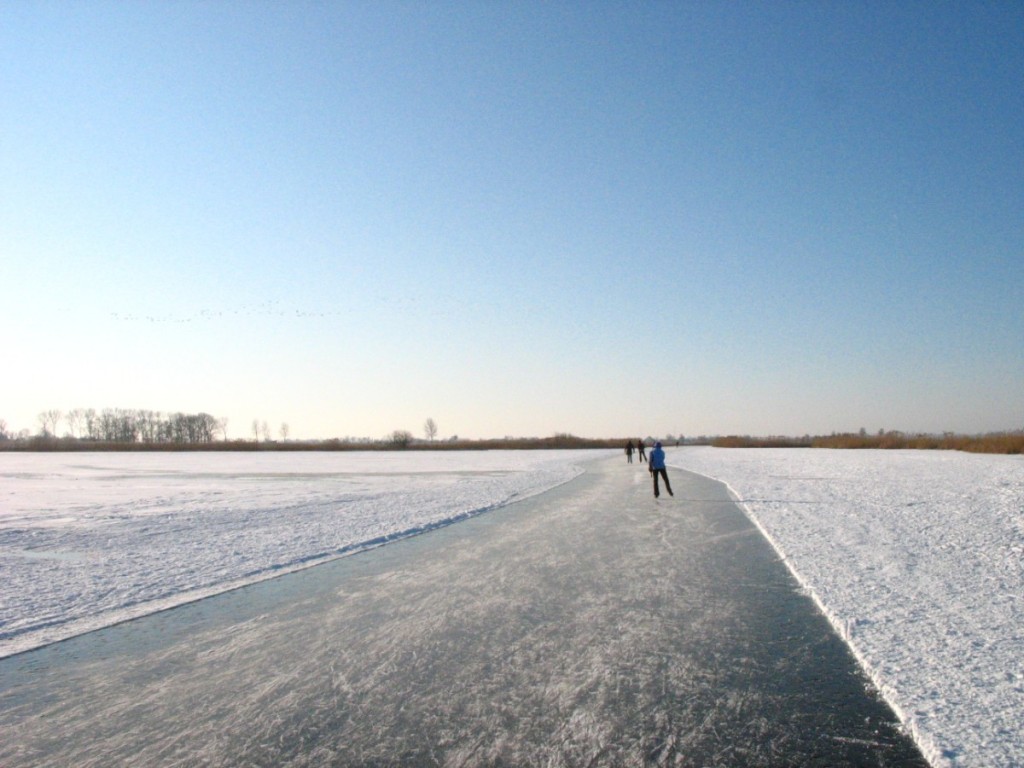9 February 2012
Cold fury of Europe’s freezing spells to fade
Posted by kramsayer
With bitter temperatures gripping much of Europe for the last two weeks, many in the Netherlands have been glued to the weather forecasts, hoping for the cold to continue. At stake was whether the ice would get thick enough to hold the traditional Elfstedentocht, a 125-mile, 11-city skating race across frozen canals and lakes.
The race is a rare treat – since 1997, the event has fallen through every year because of insufficient ice. The possibility that the 2012 cold snap would make the race possible this year has been “the big thrill in the Netherlands,” said climatologist Hylke De Vries. It has also been of keen interest to De Vries, who is not only a skater himself, but who recently had a scientific study accepted for publication forecasting just how frigid future cold spells will get in Western Europe.
But a rise in the mercury disappointed the Dutch. As weather reports predict a thaw for this coming Sunday, the race has once again been called off. And in the coming decades, De Vries said Tuesday after a morning skate on the canals, the chances that cold spells will create race-friendly conditions are even grimmer. In the new study, he and his colleagues use computer models to find that the frequency of cold spells seems to remain the same between 2060 and 2100. But Western Europe’s cold periods could be significantly warmer than they are now – by about 5 degrees Celsius (9 degrees Fahrenheit). That’s bad news for ice skating, since the average cold spell will be above freezing.

Hylke De Vries, a climatologist with the Royal Netherlands Meteorological Institute, skates on canal in the Netherlands Feb. 7. He and his colleagues have found that cold spells are likely to get significantly warmer - and remain above freezing for sections of Western Europe. (Credit: De Vries)
This predicted trend not only bodes ill for sturdy canal ice, which now only happens every other year or so, said De Vries, but the milder cold spells could have significant ecosystem impacts as well. Some species that usually die in the winter, like insects, could stick around, while the lack of a solid frost could upset the seasonal rhythms of plants. “We’ll regret them if they’re not there,” he said of the cold spells.
In the new study, the researchers define cold spells as stretches when the temperature dips into the bottom 10 percent of the normal winter temperature range. Their findings have been accepted for publication in Geophysical Research Letters, a journal of the American Geophysical Union.
Future cold spells are predicted to be warmer in the Netherlands and surrounding areas. Typically, westerly winds originating from the Atlantic keep the Netherlands fairly temperate. However, sometimes a high-pressure system forms and sticks around. If it is centered over Scandinavia, bitterly cold air heads toward the Netherlands. In the coming century, as winter temperatures rise, that eastern and northern section of Europe is expected to warm much faster than the coastal areas. So the cold spells that rely on cold air from Siberia will become even warmer than expected, compared to the slightly increased average winter temperatures in the Netherlands.
It’s not like cold snaps will stop occurring in this century. The models do forecast periods when the temperatures drop for a cold spell, said De Vries. Using global climate models, the researchers found that even in a warming climate the average frequency and duration of such relative cold snaps stays about the same.
“In a way, we’re relieved, the weather isn’t completely changing according to the models,” he said. “It’s not like we won’t ever have cold spells.” But thick ice on the canals is another story.
For the Netherlands, a dramatic 5-degree warming of the average cold spell temperature would mean the canals would often remain flowing, De Vries said, not frozen.
![]() de Vries, H., Haarsma, R., & Hazeleger, W. (2012). Western European cold spells in current and future climate Geophysical Research Letters DOI: 10.1029/2011GL050665
de Vries, H., Haarsma, R., & Hazeleger, W. (2012). Western European cold spells in current and future climate Geophysical Research Letters DOI: 10.1029/2011GL050665
– Kate Ramsayer, AGU science writer



 GeoSpace is a blog on Earth and space science, managed by AGU’s Public Information staff. The blog features posts by AGU writers and guest contributors on all sorts of relevant science topics, but with a focus on new research and geo and space sciences-related stories that are currently in the news.
GeoSpace is a blog on Earth and space science, managed by AGU’s Public Information staff. The blog features posts by AGU writers and guest contributors on all sorts of relevant science topics, but with a focus on new research and geo and space sciences-related stories that are currently in the news.
[…] to thinking about the connection between freezing rivers and sunspot activity. In fact, it was a 125-mile ice-skating race he attended over 20 years ago in the Netherlands that sparked the scientist’s […]